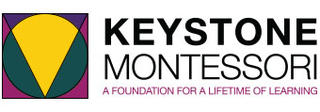Born in Chiaravalle in the Province of Ancona in 1870, Maria Montessori was the first woman to practise medicine in Italy, having graduated from the Faculty of Medicine at the University of Rome in 1896. As a physician, Dr. Montessori was in touch with young children and became profoundly interested in their development. Through careful and exhaustive scrutiny, she realised that children construct their own personalities as they interact with their environment. She also observed the manner in which they learned as they spontaneously chose and worked with the auto didactic materials she provided. Her approach to education stemmed from a solid grounding in biology, psychiatry and anthropology. She studied children of all races and cultures in many countries around the world, soon seeing the universality of the laws of human development played out before her. She continued her observations throughout her life, widening and deepening her understanding until her death in 1952.
Life’s Work
Maria Montessori opened her first Casa dei Bambini (Children’s House) in one of the very poorest areas in Rome, the then notorious Quartiere di San Lorenzo.
“It was January 6th (1907), when the first school was opened for small, normal children of between three and six years of age. I cannot say on my methods, for these did not yet exist. But in the school that was opened my method was shortly to come into being. On that day there was nothing to be seen but about fifty wretchedly poor children, rough and shy in manner, many of them crying, almost all the children of illiterate parents, who had been entrusted to my care”… “They were tearful, frightened children, so shy that it was impossible to get them to speak; their faces were expressionless, with bewildered eyes as though they had never seen anything in their lives.”… “It would be interesting to know the original circumstances that enabled these children to undergo such an extraordinary transformation, or rather, that brought about the appearance of new children, whose souls revealed themselves with such radiance as to spread a light through the whole world.”
Indeed it was as though this radiance had been caught in a stream of consciousness, for a mere six months after the opening of the Casa dei Bambini, people from all walks of life, from every continent came to see Maria Montessori’s miracle children.
In 1909 she gave her first Montessori course, expecting to have as students only Italian teachers. To her amazement people attended from many different countries. Probably that was the origin of what would become a serious handicap in the evolution of Montessori pedagogy.
“Since the beginning Montessori pedagogy has been appropriated, interpreted, misinterpreted, exploited, propagated, torn to shreds and the shreds magnified into systems, reconstituted, used, abused and disabused, gone into oblivion and undergone multiple renaissances.”
Renilde Montessori
There are various reasons why this should be so. Perhaps the most important is that although Montessori pedagogy is known as the Montessori Method, it is not a method of education, in other words, it is not a programme for teachers to apply. Maria Montessori was not a teacher …. the Alpha and Omega of her pedagogy lies with the children.
Maria Montessori was a scientist, and as a good scientist, she was earth-bound and highly spiritual in her pursuit of truth. She studied medicine, specialising in psychiatry and anthropology. She was also an outstanding mathematician. Although she would never have considered being a teacher, she studied educational methods for many years and found them wanting, possibly because none of them took into account the two seemingly paradoxical extremes which are at the centre of her pedagogy: the universal characteristics of the human child, and the child as a unique, unrepeatable, respectable and admirable individual to be unconditionally accepted as one of life’s most marvellous expressions.

